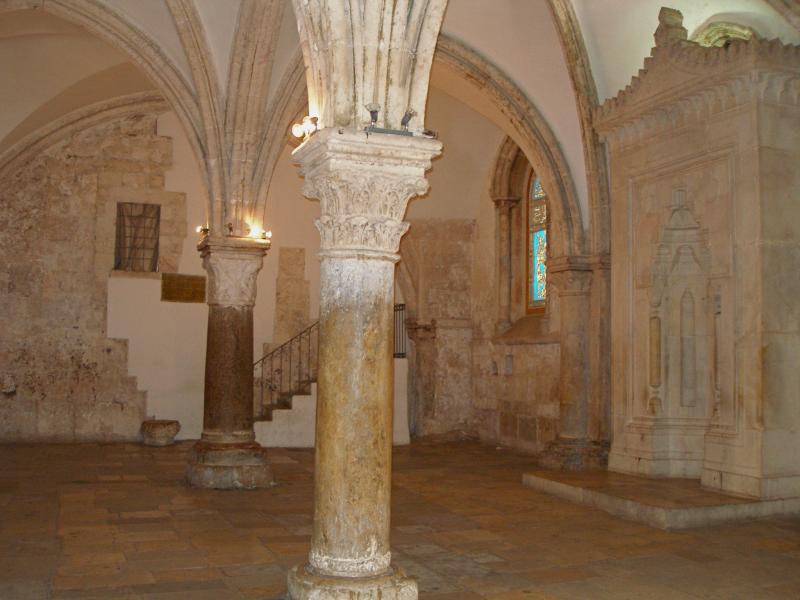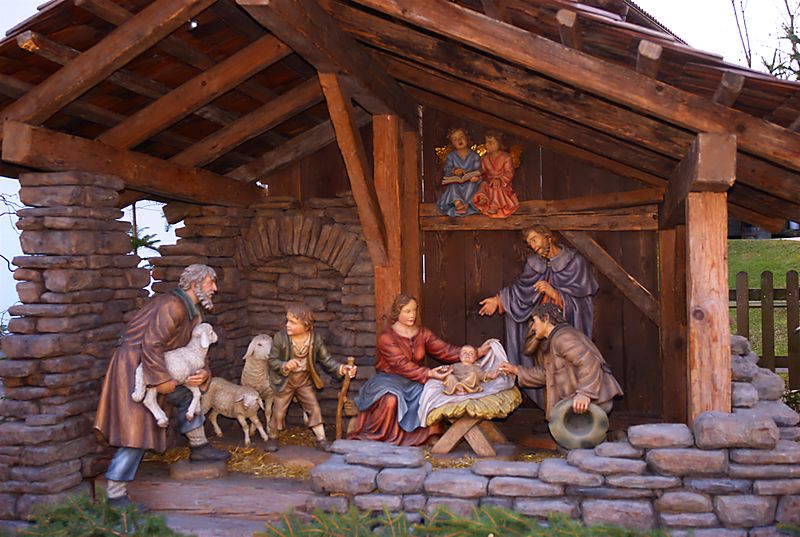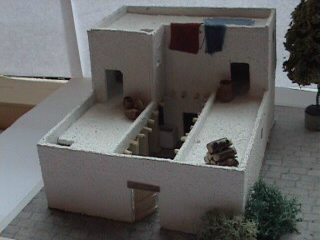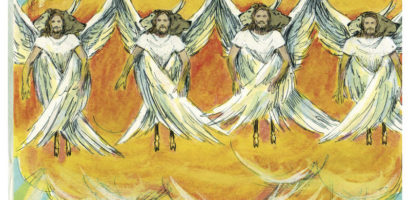The birth of Jesus, celebrated by hundreds of millions every year on Christmas, is certainly one of the world’s best known stories. Surprisingly, this famous scene only appears in two of the four canonical gospels, Matthew and Luke. Of these two, Luke contains the more detailed description of the birth itself:
And Mary gave birth to her firstborn son and wrapped him in bands of cloth, and laid him in a manger, because there was no place for them in the inn. (Luke 2:7).
This verse has given rise to the popular image of the holy family in a barn on the outskirts of Bethlehem. Most of us assume that Joseph and Mary were looking for a hotel room and when they found all the rooms booked they had no choice but to sleep in a stables. Is this so?
Probably not. The most problematic English word in this verse is “inn”. Firstly. Bethlehem was far too small a village to have an actual hotel. Secondly, the Greek word which means “inn” pandoxeion (πανδοχεῖον) is not used here. Luke uses the word in 10:34 in his telling of the Parable of the Good Samaritan. But here in chapter 2 he uses a different word: katalyma (κατάλυμα). Based on the verb katalyo (καταλύω), which means “to put down one’s things”, the katalyma is simply any sheltered space used as a resting place. It is used many times in the Septuagint, as these two examples indicate:
You have led in your steadfast love the people whom you have redeemed; you have guided them by your strength to your holy resting place. (Exodus 15:13)
O you hope of Israel, its savior in time of trouble, why should you be like a stranger born in the land, like a traveler who turns aside for a resting place? (Jeremiah 14:9)
But Luke seems to have a more specific type of space in mind when he uses the word katalyma. The one other instance where it appears in Luke is prior to the Last Supper. The disciples ask Jesus where he would like to eat the Passover festive meal. He answers them:
“Behold, when you have entered the city, a man carrying a jar of water will meet you. Follow him into the house (oikia) that he enters 11 and tell the master of the house, ‘The Teacher says to you, Where is the guest room (katalyma), where I may eat the Passover with my disciples?’ 12 And he will show you a large upper room (anagaion) furnished; prepare it there.” (Luke 22:10-12)
Note that the custom of the region was to have the guestroom upstairs.

The Cenacle, the traditional location of the Last Supper, on Mount Zion just south of the Jerusalem’s Old City. The Romanesque interior seen here dates to 1335 and was built by the Franciscans.
So to return to the birth of Jesus, Mary and Joseph were not looking for a room in an “inn” but simply the upstairs level of a typical residential house used as a bedroom. When visitors came, it could be used as a guest room. Due to the empire-wide census, numerous members of Joseph’s family had congregated in Bethlehem, and all the katalymata in town were occupied. Because there was “no room in the upstairs bedroom,” Joseph and Mary had to sleep downstairs in the main room of a relative’s house. This room was a sort of all purpose room. During the day it was used as a workshop. At night it was used to house frail animals, while the rest of the flock was left outdoors. The katalyma was not a full-fledged barn or stables, but it did contain a drinking trough or manger cut in the bedrock. This was the most convenient place to place the baby Jesus once he was born. So while Jesus was indeed born in a room used for animals, this was not strictly a barn.







[…] walls. The solution was to rent out the upstairs guestroom of a house within the city. Recall from a previous blogpost that the word for this type of room, kataluma, is precisely the same word that is used in the […]
You need to be a part of a contest for one of the most useful websites on the net.
I am going to highly recommend this site!
Wow, what kind words! Many thanks for reading and for recommending the site!
I would like to learn more.